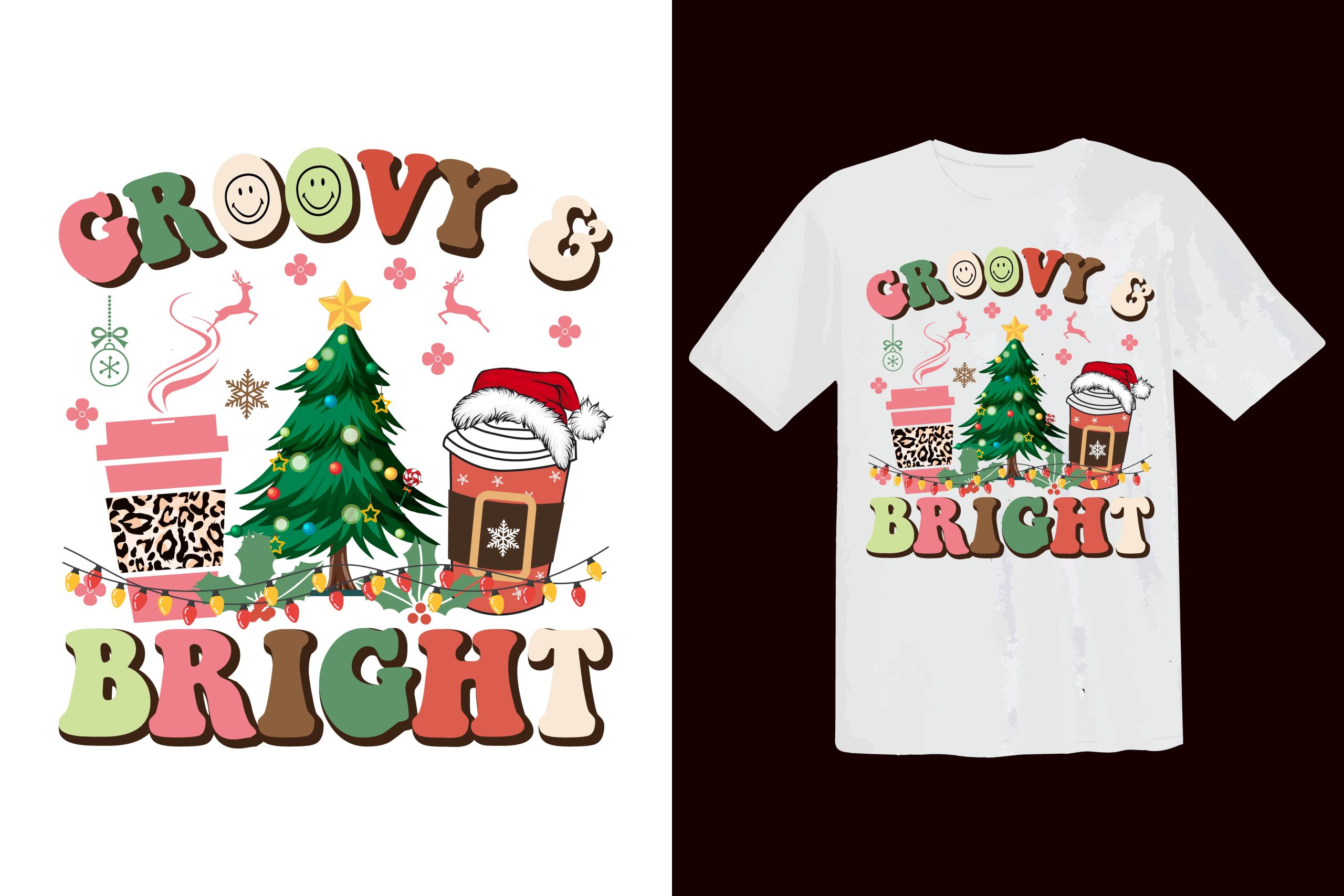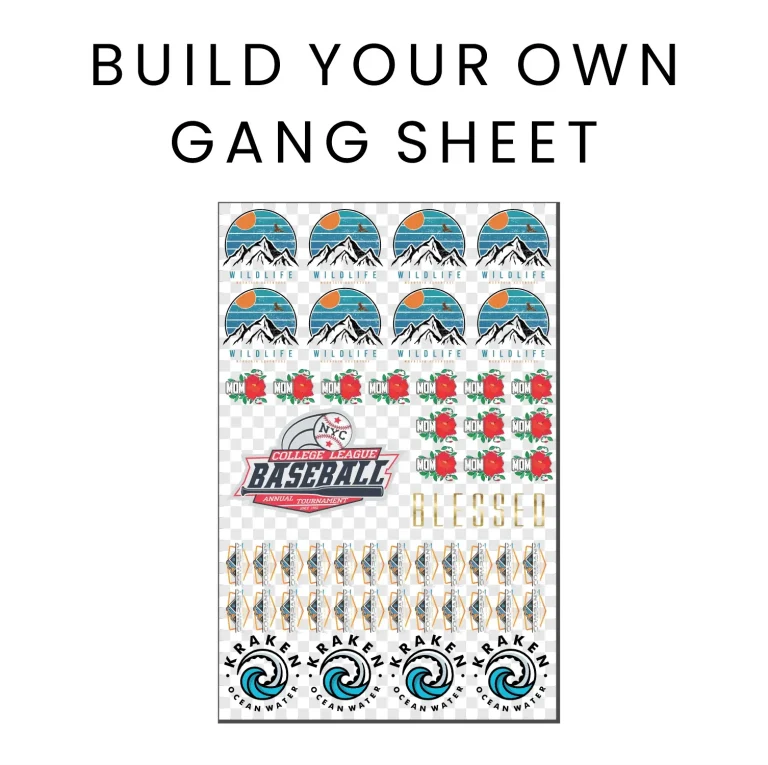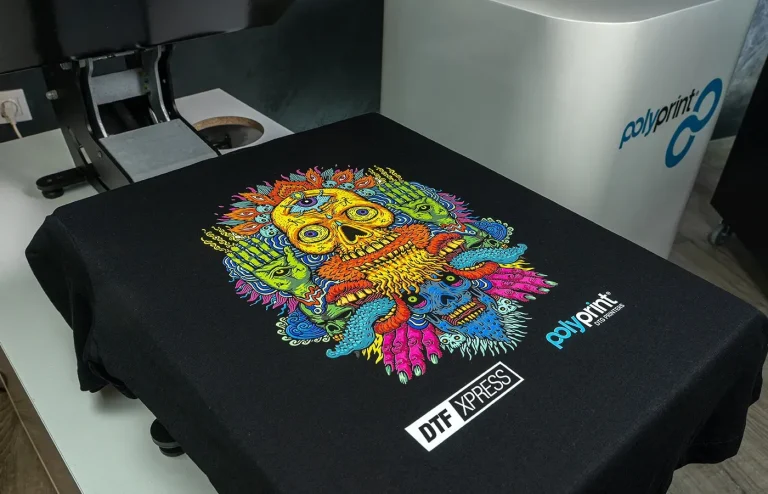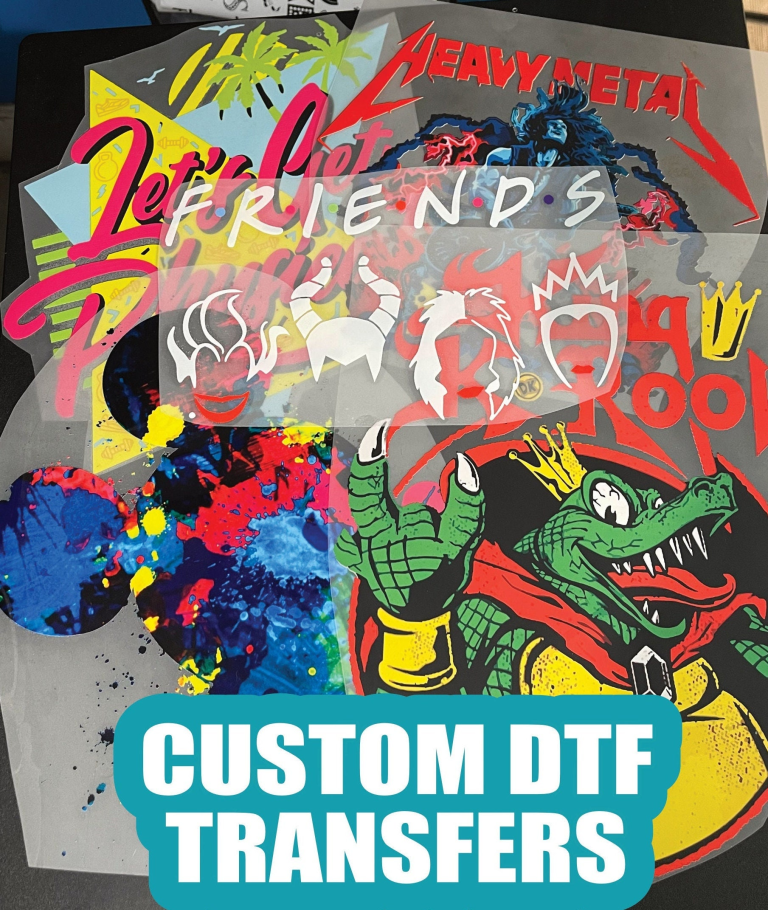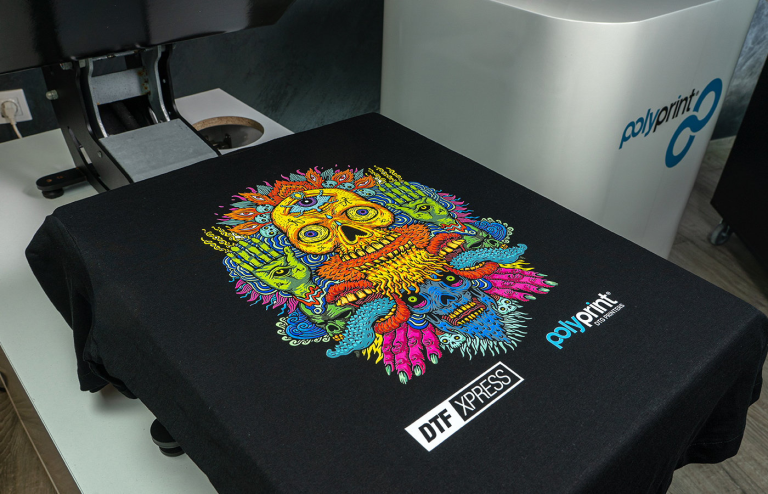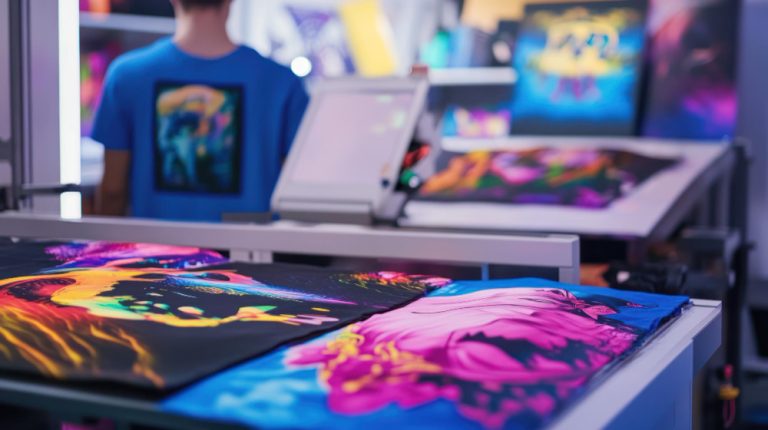DTF Transfers: The Ultimate Guide You Need to Know
**DTF Transfers**, or Direct to Film transfers, are revolutionizing the custom apparel printing industry with their remarkable capabilities and high-quality results. This innovative printing method allows for vibrant and durable designs to be effortlessly applied to a range of fabrics, including cotton and polyester blends. As businesses and individuals seek new avenues for expressing creativity, understanding the DTF printing advantages becomes essential. The DTF transfer process, which includes design creation, film printing, and heat pressing, ensures efficient and stunning outcomes. Dive into this guide to uncover everything you need to know about DTF printing and how it can elevate your custom designs.
Commonly referred to as Direct to Film printing, the DTF method is capturing attention in the custom apparel landscape, sparking interest among entrepreneurs and hobbyists alike. This technique employs specialized film materials to transfer intricate designs onto textiles, standing out for its versatility and quality. The process involves several critical steps, from design conception to applying vibrant graphics onto fabrics through heat transfer. Many are drawn to DTF for its superior durability and the ability to produce eye-catching colors, making it a preferred choice for custom clothing solutions. In this article, we will explore key aspects of DTF transfers, highlighting their features and benefits for modern printing needs.
Understanding the Essentials of DTF Transfers
DTF transfers, or Direct to Film transfers, have revolutionized the way custom designs are applied to apparel. This advanced printing technique bridges the gap between traditional methods and modern demands, catering to a wide variety of fabric types. By utilizing a specialized film, along with unique adhesive powders, DTF transfers enable intricate designs to be printed on diverse textiles, including cotton and polyester blends. This versatility not only makes DTF printing an attractive option for small businesses and hobbyists alike but also enhances the creative potential for artists and designers in the apparel industry.
Moreover, understanding the mechanics behind DTF transfers is crucial for anyone venturing into custom apparel printing. The process begins with design creation, where suitable graphic design software plays a pivotal role. Following this are intricate steps involving printing onto the transfer film, applying adhesive, and heat pressing onto the fabric. Each phase requires careful consideration and technique, allowing for vibrant outputs that hold their integrity over time.
The Comprehensive DTF Printing Process Explained
The DTF printing process is a multi-step approach that ensures high-quality results for custom designs. Initially, the graphic design is crafted using specialized software, focusing on clarity and vibrancy, which is crucial for the final print outcome. Following this, DTF printers utilize advanced technology to transfer these designs onto a film suitable for adhesive coating. The application of adhesive powder is a critical phase, requiring precision to ensure uniformity and effectiveness in adherence to various fabrics.
Heat pressing marks the final stage of the DTF transfer process. During this step, the printed film is placed strategically on the garment, where heat and pressure work together to bond the design seamlessly onto the fabric. This technique not only enhances the aesthetic appeal of the print job but ensures its longevity, resisting wear from daily usage and routine washing.
The Many Advantages of DTF Printing
DTF printing offers numerous advantages that contribute to its growing popularity within the apparel industry. One of the standout benefits is its remarkable versatility; DTF transfers can be applied to various fabrics, such as cotton, polyester, and even mixed materials without compromising on print quality. This adaptability allows businesses to cater to a broader audience, creating customized products that meet diverse customer needs and preferences.
In addition to versatility, DTF transfers are celebrated for their vibrant color reproduction. The technology allows for exceptionally bright prints that capture intricate details, making designs pop and stand out from traditional printing methods. Furthermore, the durability of DTF prints ensures that customers are satisfied with their purchases, as the designs resist fading and cracking even after repeated wash cycles, making them ideal for long-lasting apparel.
Latest Innovations and Trends in DTF Printing
The DTF printing landscape is not static; it evolves with ongoing advancements that enhance efficiency and expand capabilities within the industry. Recently, improvements in printer technology have resulted in faster operation speeds and enhanced print resolution, making it easier for small businesses and craftspeople to invest in DTF printing. These innovations help streamline the workflow, providing users with the tools necessary to meet increasing demand for custom apparel and textile products.
There has also been a heightened focus on eco-friendly practices within DTF printing. The rise of sustainable inks and materials reflects a broader trend in the printing industry, appealing to environmentally-conscious consumers. As the demand for green practices continues to grow, companies that incorporate eco-friendly options into their production processes can not only reduce their environmental footprint but also attract a more diverse customer base.
Essential Tips for New DTF Printers
For those new to DTF printing, embarking on this journey can be overwhelming. To optimize your experience, it’s important to invest in quality equipment, such as a reliable DTF printer and heat press, as this initial investment can significantly impact the quality of your final product. Conduct thorough research on various models that align with your specific needs, whether you are starting a small business or exploring a hobby.
Another critical aspect to consider is the experimentation with different adhesive powders and curing methods. Each adhesive may react differently with various fabrics, so trial and error can lead to the discovery of the best combination for your unique projects. Engaging with online communities, attending workshops, and actively seeking knowledge can accelerate your learning and help you navigate the complexities of DTF printing effectively.
Economic Considerations in DTF Printing
While initial costs for DTF printing setup can be substantial, with investments in equipment and materials, the long-term financial benefits can far exceed these upfront expenses. The market for custom apparel is expanding rapidly, and as consumers increasingly seek personalized products, businesses equipped with DTF printing capabilities are well-positioned to capitalize on this trend. By creating unique, high-quality items, entrepreneurs can gain a competitive edge that translates into impressive revenue potential.
Furthermore, advancements in technology and production efficiency have led to more competitive pricing for DTF equipment, making it more accessible than ever for emerging businesses. By closely monitoring industry trends and consumer preferences, business owners can adopt innovative practices that help optimize costs and maximize profits in the custom apparel market.
Frequently Asked Questions
What are DTF Transfers and how do they work?
DTF transfers, or Direct to Film transfers, utilize a unique printing method to apply designs onto various fabrics. The process involves printing your design onto a special film, applying an adhesive powder, and then using a heat press to bond the design to the fabric. This method allows for vibrant colors and durable prints on a wide range of materials.
What are the advantages of using DTF printing for custom apparel?
DTF printing offers numerous advantages for custom apparel, including versatility in printing on different fabrics like cotton and polyester, vibrant color outputs that enhance design appeal, and durability that resists fading and cracking over time. These benefits make DTF transfers an excellent choice for both personal and commercial applications.
How does the DTF transfer process compare to traditional DTG printing?
While traditional Direct-to-Garment (DTG) printing is limited to specific fabrics, DTF printing provides greater versatility, allowing users to print on a wider range of textiles. The DTF transfer process involves several steps including film printing, adhesive application, and heat pressing, creating durable and vibrant designs that can outperform those achieved through DTG methods.
What do I need to get started with DTF printing?
To begin with DTF printing, you’ll need a reliable DTF printer, heat press machine, special transfer films, and adhesive powders. It’s also beneficial to have graphic design software to create or modify your designs to ensure high-quality outputs in the DTF transfer process.
Are there any recent trends in DTF printing technology?
New trends in DTF printing include advances in equipment efficiency, allowing for faster production and improved accessibility for small businesses. Additionally, there’s a growing interest in eco-friendly inks and materials as the industry shifts towards sustainable practices, making DTF transfers a more environmentally responsible choice.
What are some tips for achieving high-quality DTF transfers?
To achieve high-quality DTF transfers, invest in quality equipment, experiment with different adhesive powders for optimal results, and continuously educate yourself through community resources and tutorials. These practices will help you maximize the quality and durability of your custom apparel printing.
| Key Points | Details |
|---|---|
| What is DTF Printing? | A method that transfers designs onto fabrics using film and adhesive, catering to a wide range of materials. |
| The DTF Printing Process | 1. Design Creation 2. Printing the Transfer Film 3. Applying Adhesive Powder 4. Heat Pressing |
| Advantages of DTF Transfers | – Versatility in materials – Vibrant color outputs – Durable prints resistant to fading and peeling |
| Recent Developments | – Equipment efficiency improvements – Rise of eco-friendly inks – Growing community support |
| Beginner Tips | 1. Invest in quality equipment 2. Experiment with adhesives 3. Engage with communities for learning |
| Cost Considerations | – Initial equipment costs may be high but manageable. – Potential for substantial revenue through custom apparel. |
| Resources | – Printmax for equipment comparisons – The Print Guide for pros and cons of DTF |
Summary
DTF Transfers have emerged as a transformative solution in the custom printing industry, bringing forth a new era of quality and versatility for apparel and textiles. This innovative printing method stands out for its ability to deliver vibrant and durable designs across a wide range of fabrics, setting itself apart from traditional techniques. As advancements in technology continue to reshape the landscape of DTF transfers, staying updated with best practices and community insights will be essential for anyone looking to leverage this exciting printing option.

